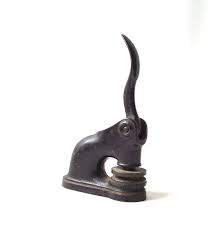| g e n u i n e i d e a s | ||||||
 |
 |
 |
 |
 |
 |
 |
| home | art and science |
writings | biography | food | inventions | search |
| world wide notary proposal |
| May 2018 |
|
(note added in Jan 2023. The Economist mentions three companies offering smart phone software to capture, proof and hash images. Narrow applications so far, but an encouraging sign. Eyewitness to Atrocities, The Guardian Project and TruePic.)
The World Wide Notary (WWN) is designed as a light weight, transparent and extensible platform where anyone can submit a file to a community of trusted servers to be notarized. The notary “stamp” is basically a secure hash function that all trusted servers store and maintain. Anyone can access this database to confirm the original file is uncorrupted or untampered, and that the server consortia was not been breached and is operating normally. Once the lightweight WWN infrastructure is in place, others can build services on top of this common platform. For example, to streamline the filing of deeds and transfer of property. Or, to use the hash history to fight fake news by indicating in a browser if all the images on a web page are unmodified and traceable back to the date and location claimed (more details in this short paper). Or to store the original files as well as the hash in the cloud. Or, to chain hashes into a block, enforcing contracts and perhaps transferring funds between individuals or companies.
It all comes down to a matter of trust. The entire point behind a mined digital ledger is replacing a lack of trust in individual organizations with expensive, slow hard encryption. Which is a laudible goal. Of course, every day we trust our bank to move money around accurately without a public ledger or crypto mining. We trust Home Depot to check that the nuts and bolts in a package match the supplier’s specs. And it works. No blockchain required. I believe, if two dozen reputable organizations got together and agreed to trust each other’s hash files, I would trust this consortia without the overhead of crypto mining. For example, I’d trust a consortia of Apple, the EFF, a couple of other firms or foundations, and (for definitiveness) a dedicated server I shared with friends that replicated the shared hash table, to be incorruptible. Others with different preferences or experiences could submit files to a separate circle of trust (or if paranoid, to multiple circles). In principle, any circle might collude to change the past, but if they have that much power, we are in deeper trouble than can be addressed by putting our most important files in the hands of Russian or Chinese processor farms running hard crypto challenges. This WWN would be able to handle millions of transaction a second, and not consume the entire electrical energy capacity of our planet. A minimum viable platform would:
The goal is a lightweight, open, extensible protocol and code base that can evolve as the users adapt the system to their needs. Even lighter than the https://www.ibm.com/blockchain/hyperledger.html initiative. I’d expect the system to be offered freely for non-commercial occasional use, while a membership fee would be assessed, based on capacity allocation, for commercial or heavy users. |
Contact Greg Blonder by email here - Modified Genuine Ideas, LLC. |
 Two decades ago at Bell Labs I tried to interest the business units in an “AT&T” Notary” service. The service was based entirely on trusting AT&T to be a neutral, incorruptible party. You’d send AT&T an electronic file, we’d create a hash function, and maintain a hash file ledger open to inspection. This ledger would prove the file was unchanged as of the date the hash was created. An electronic notary. Eventually AT&T passed on the idea, and (during the phase in 1988 when they were trying to reduce legal division budgets) would not even patent. Around the same time Bellcore, Hypership, Surety, UPS e-letter and others developed similar products. But the market and technology were not favorably aligned. Today, with the interest in digital ledgers, the prolifieration of electronic identity documents, the rise of the cloud and the drag of disinformation and outright fraud, an open notary is an imperative.
Two decades ago at Bell Labs I tried to interest the business units in an “AT&T” Notary” service. The service was based entirely on trusting AT&T to be a neutral, incorruptible party. You’d send AT&T an electronic file, we’d create a hash function, and maintain a hash file ledger open to inspection. This ledger would prove the file was unchanged as of the date the hash was created. An electronic notary. Eventually AT&T passed on the idea, and (during the phase in 1988 when they were trying to reduce legal division budgets) would not even patent. Around the same time Bellcore, Hypership, Surety, UPS e-letter and others developed similar products. But the market and technology were not favorably aligned. Today, with the interest in digital ledgers, the prolifieration of electronic identity documents, the rise of the cloud and the drag of disinformation and outright fraud, an open notary is an imperative.